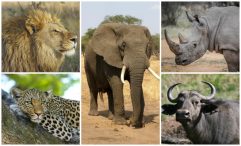Many would assume that the term ‘The Big Five’ is attributed to the animals’ large size. However, Africa’s ‘Big Five’ list dates from a time when human/animal encounters ended badly for the animal. The Big Five were the hardest to hunt on foot and therefore the most valued trophies; African Elephant, Cape Buffalo, African Leopard, African Black Rhinoceros and African Lion.
Fortunately, today, thanks to decades of worthwhile efforts in the conservation and preservation of the wildlife, the Big Five safaris no longer refers to hunting safaris. Instead, it now provides travellers all over the globe with the priceless opportunity to observe the magnificent creatures frolicking in their own habitat. Tanzania is the best destination for the Big Five Safaris in Africa.
Here are some interesting facts you may be interested to know about the Big 5 animals:
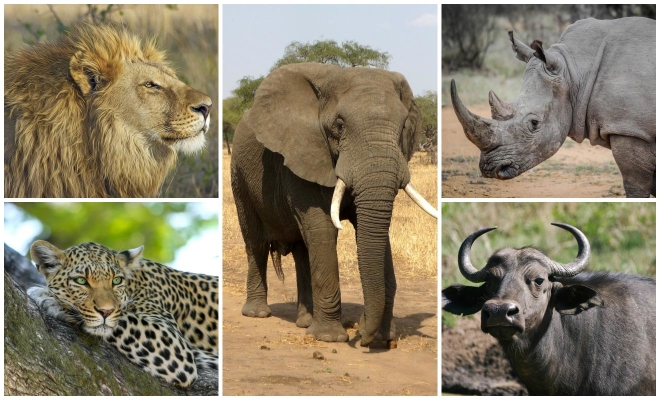
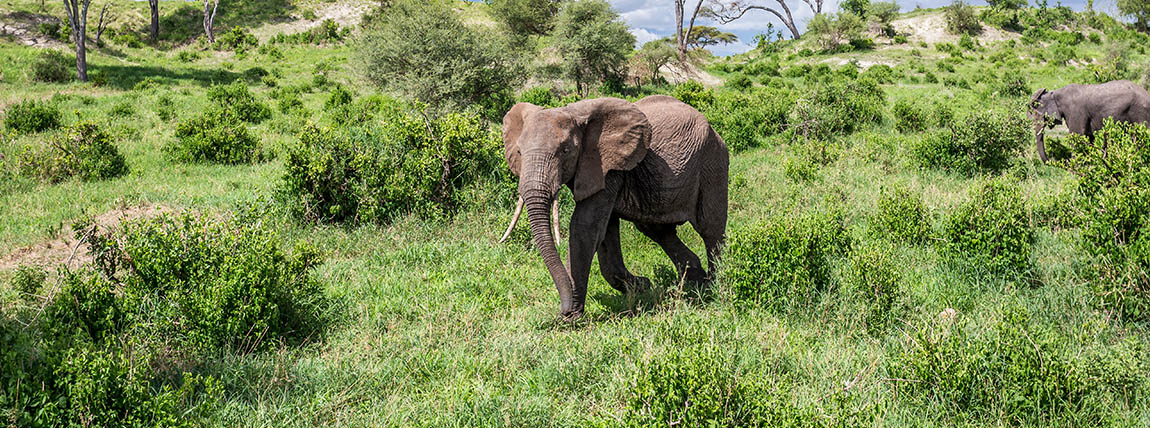
The African elephant is the world’s largest land mammal, and you’ll definitely see herds of these gentle giants on your Tanzania Safari. There are actually 2 different species of the African elephant: the savannah elephant and the forest elephant. The forest elephant is usually smaller with rounded ears as well as tusks that grow downward. While the Savannah elephants can be found in the savannah of Africa. The best place to view these mighty elephants is in Tanzania where travellers constantly find them while going on safaris in Tarangire National Park as Tarangire’s vegetation comprises of mostly dry, open woodlands, which include thorny acacia thickets and lots of its signature baobab trees. It is Famous for its vast herds of elephants.
Elephants have shock-absorbing pads on their feet that allow them to walk much more quietly than you’d believe of such enormous creatures. They also have rather delicate skin than can sunburn and get irritated by even an insect! That’s why you see elephants using their trunks to throw sand over themselves to protect against the sun and bugs.
 Interestingly, they can spend up to 16 hours a day eating. They consume between 300 two 500 pounds of food per day. They have bad eyesight however the largest brains in the animal kingdom. Males will only leave the herd at the age of between 12 to 15 years. Elephants can give birth every 3 to 4 years and the gestation period is 2 years. Babies when born can weigh approximately 250 pounds. The average weight of an elephant heart is between 27 to 47 pounds. Only at the age of 16 can the female Elephant reproduce but rarely has more than 4 children.
Interestingly, they can spend up to 16 hours a day eating. They consume between 300 two 500 pounds of food per day. They have bad eyesight however the largest brains in the animal kingdom. Males will only leave the herd at the age of between 12 to 15 years. Elephants can give birth every 3 to 4 years and the gestation period is 2 years. Babies when born can weigh approximately 250 pounds. The average weight of an elephant heart is between 27 to 47 pounds. Only at the age of 16 can the female Elephant reproduce but rarely has more than 4 children.
Elephants can communicate with each other across great distances by making sounds in frequencies lower than humans can hear. And these social creatures mourn dead members of their herd with rituals that can last days.
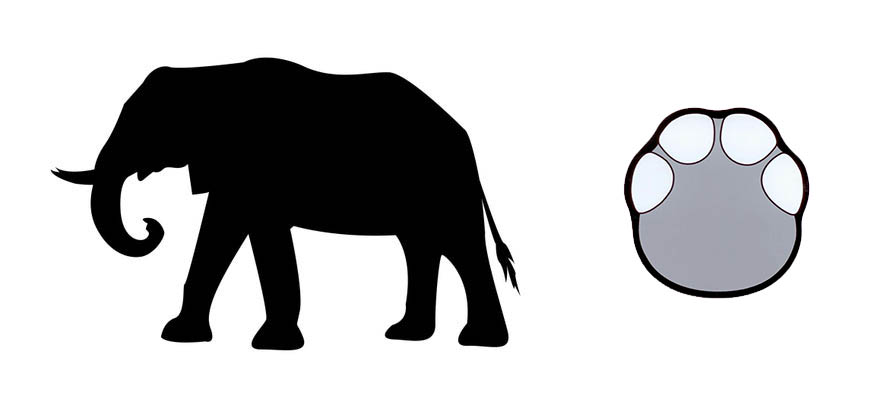
The African elephant is a genus comprising two living elephant species, the African bush elephant and the smaller African forest elephant. Both are herbivores and live in groups. They have grey skin and differ in the size of their ears and tusks, and in the shape and size of their skulls.
Scientific name: Loxodonta
Height: African bush elephant: 3.2 m
Class: Mammalia
Order: Proboscidea
Gestation period: African bush elephant: 22 months
Weight: African bush elephant: 6,000 kg, African forest elephant: 2,700 kg
Lifespan: African bush elephant: 60 – 70 years, African forest elephant: 60 – 70 years
Conservation status: Endangered

Often referred to as the “King of Beasts” or the “King of the Jungle”, the African lions are the biggest of the African carnivores. The African lion is also thought to be the most social of all the big cats. They can be found roaming around together in groups called ‘prides’. Each pride contains up to three males, a dozen females and their cubs.
Lion prides with a rich, reliable food supply can afford to be territorial. Both lions and lionesses signal their occupation of an area by scent marking with urine and by roaring. Roars can carry for a good 8 km and advertises a lion’s location. It also shows that an area is occupied and allows pride members to keep track of one another.
In many prides African lion males do not hunt. The reason for this is that their manes and large size make them more conspicuous and less successful in the hunts than lionesses. The result is that these males live mainly off the efforts of their females. They use their dominant status to take food from the females. This does not however mean that male lions lack in hunting skills.
 A male and female away from the pride are probably mating, which guarantees constant action. Lions may mate hundreds of times during the three- to four-day estrous of the female. Mating occurs about four times an hour over a period of one to two days and lasts for less than a minute each time.
A male and female away from the pride are probably mating, which guarantees constant action. Lions may mate hundreds of times during the three- to four-day estrous of the female. Mating occurs about four times an hour over a period of one to two days and lasts for less than a minute each time.
The African lion has for a very long time been a symbol of strength, nobility and power. The African lions have been a great fascination for many Tanzania safari itineraries. If you want to see the kings of the jungle, the Serengeti National Park is the place to be. With so many prey animals like wildebeest, gazelles, buffalos, giraffes and zebras, lion prides are assured of food. Many documentaries and Television shows featuring Africa’s loins have been produced in Serengeti, Tanzania.
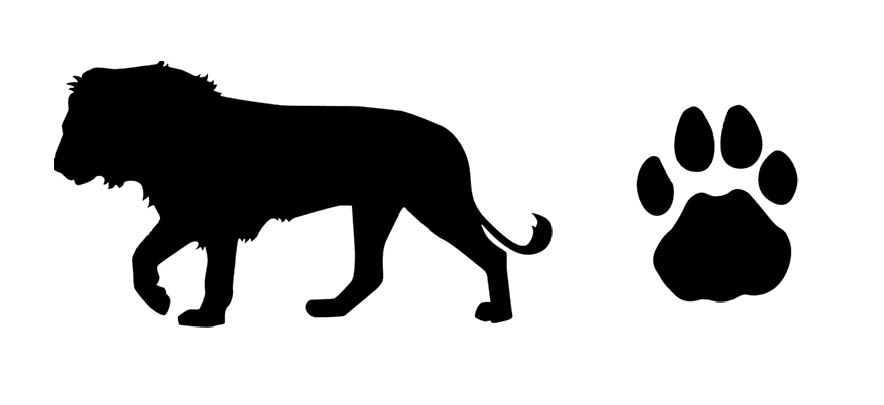
The lion is a species in the family Felidae; it is a muscular, deep-chested cat with a short, rounded head, a reduced neck and round ears, and a hairy tuft at the end of its tail. It is sexually dimorphic; adult male lions have a prominent mane, which is the most recognisable feature of the species.
Lifespan: 10 – 14 years (Adult, In the wild)
Scientific name: Panthera Leo
Speed: 80 km/h (Maximum, In Short Bursts)
Gestation period: 110 days
Weight: Male: 190 kg (Adult), Female: 130 kg (Adult)
Diet: Carnivore
Conservation status: Vulnerable

The African buffalo also known as the Cape buffalo is a large mammal of the African bovine family. They can be easily seen in protected areas and national parks such as the Ngorongoro Crater and the Serengeti National Park. African buffalo are heavy, cow-like animals that like to live near water and need tons of grass to thrive.
Buffalos are very successful grazers and can be found in different habitats like swamps, floodplains, forests, open and wooded savannahs and also in mopane grasslands. They are not picky eaters and will happily munch away on longer grass. They usually graze in the early mornings and late evenings and they prefer to look for thick cover during the hotter time of the day. Water is very important to them and they must drink on a daily basis. Adult buffalos can drink up to 40 litres of water in one go! If it is one thing that the buffalos love, it has to be wallowing in the mud. They do this to cool themselves off.
Safety in numbers is very important for buffalos, that is why some herds can have up to a thousand members! The herds are generally made up of females and their offspring. A strict hierarchy among the herd makes sure that everything runs smoothly. Males usually form a bachelor herd and they only join the bigger groups during mating season.
 The African buffalo is not believed to be closely related to the water buffalo even though they superficially resemble each other. And unlike the water buffalo, the dangerous African buffalo has never been domesticated. According to the research, it’s being said that Cape buffaloes are having a weak sighting and hearing power. But these animals are blessed with sharp memory.
The African buffalo is not believed to be closely related to the water buffalo even though they superficially resemble each other. And unlike the water buffalo, the dangerous African buffalo has never been domesticated. According to the research, it’s being said that Cape buffaloes are having a weak sighting and hearing power. But these animals are blessed with sharp memory.
Cape buffalos are known as Mafia of the jungle as they are aggressive and furious against predators. Buffalo’s primary predator is the lion. Buffalo will try to rescue another member who has been caught. They are very sensitive towards their troop members and calves, so never let anyone to walk inside their area. They have been observed killing a lion after it has killed a member of the group. That’s why a lion that attacks a buffalo is taking a huge risk of dying.
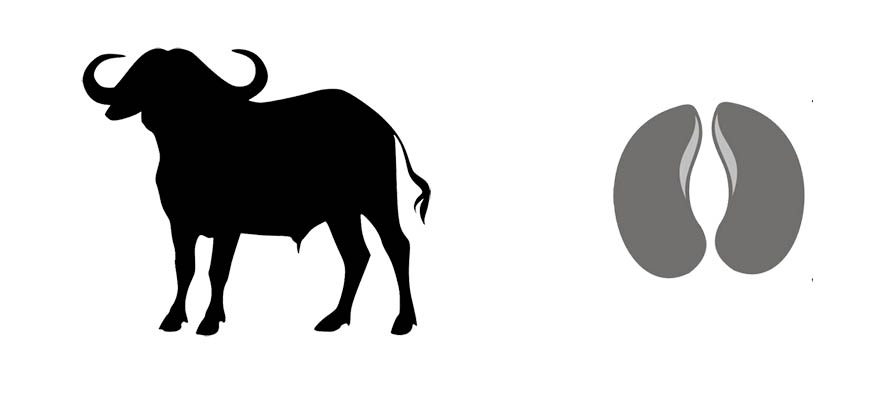
The African buffalo or Cape buffalo is a large Sub-Saharan African bovine. Syncerus caffer, the Cape buffalo, is the typical subspecies, and the largest one, found in Southern and East Africa.
Weight: 590 kg (Adult)
Family: Bovidae
Class: Mammalia
Scientific name: Syncerus caffer
Kingdom: Animalia
Conservation status: Least Concern (Population decreasing)
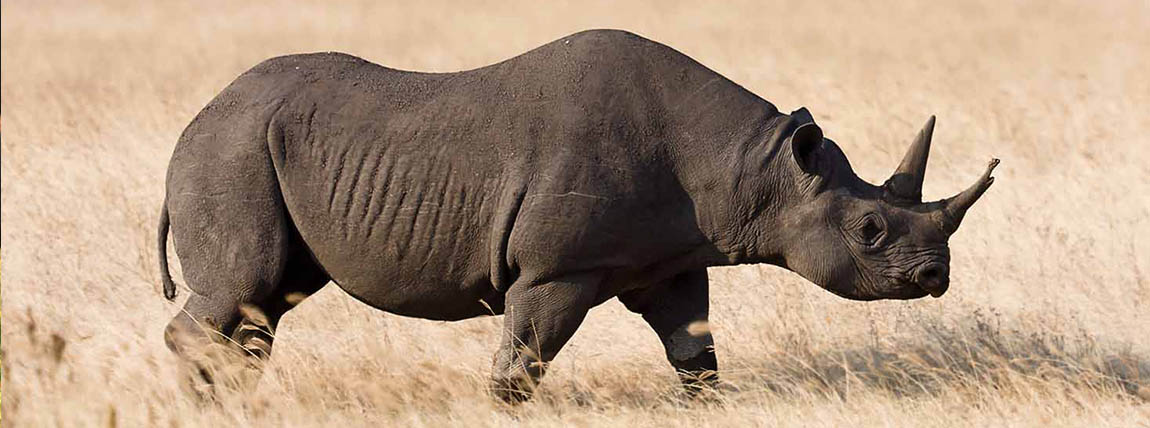
There are two species—the black rhinoceros and the white rhinoceros. What makes the Black Rhinos stands out from its ‘cousin’ the white rhino are their double (two) horns. Their front horn (located just above their nose) is considered the prominent one.
This prominent horn is the main reason why this species is still poached. Black rhinos are considered critically endangered due to the huge numbers being poached for ivory as status symbols or for medicinal purposes. Generally found in tropical or subtropical grasslands, shrublands and savannahs many are protected by reserve anti-poaching units. They can be rarely spotted in Ngorongoro Conservation Area and Serengeti National Park as well.
With the exception of females and their offspring, the Black Rhinos are actually solitary creatures – preferring to live alone. They feed at night as well as during dawn and dusk. Occasionally, if a rhino feels threatened, they will mock charge the predator; snorting and puffing as well as scuffing the dirt below their feet in order to assert their authority.
 The critically endangered species is vital for the development of tourism and conservation sectors. It is for that reason that the government of Tanzania through the Ministry of Natural Resources and Tourism has teamed up with Grumeti Fund to increase the population of rhinos within the Serengeti ecosystem. The critically endangered species are now being relocated from outside the country under the initiative.
The critically endangered species is vital for the development of tourism and conservation sectors. It is for that reason that the government of Tanzania through the Ministry of Natural Resources and Tourism has teamed up with Grumeti Fund to increase the population of rhinos within the Serengeti ecosystem. The critically endangered species are now being relocated from outside the country under the initiative.
Though its name refers to its color as black, its actual colors vary from brown to gray. A native to Eastern and Southern Africa, unfortunately, this species is still one of the most hunted animals in Africa and it is the most endangered out of the Big Five animals.

A rhinoceros, commonly abbreviated to rhino, is one of any five extant species of odd-toed ungulates in the family Rhinocerotidae, as well as any of the numerous extinct species therein. Two of the extant species are native to Africa, and three to Southern Asia.
Scientific name: Rhinocerotidae
Gestation period: Black rhinoceros: 15 – 16 months.
Mass: Black rhinoceros: 800 – 1,400 kg
Lifespan: Black rhinoceros: 35 – 50 years
Speed: Black rhinoceros: 55 km/h
Height: Black rhinoceros: 1.3 – 1.8 m
Conservation status: Critically Endangered

The lion may be king, but the beautiful, graceful and elusive leopard is the crown jewel that everyone wants to see on a Tanzania safari. This is because they are generally solitary. Their favourite landscapes are rocky outcrops, treetop vantage points and dense bushes where they can hide unseen and observe their prey. Incredibly agile, they can climb, swim and they adapt easily to the different habitats.
Solitary and shy, leopards are nocturnal and are most active in the hours of darkness, making the chances of spotting a leopard very low. Their prey most often antelope. They are stalkers, rather than chasers and lose interest quickly if their prey escapes after a short charge of up to 60 km/hour. When they catch their prey, they deliver a fatal bite to the neck or strangle it by holding it by the neck. A stealthy hunter, once they caught their prey, they’ll often safeguard it by taking it up to the trees to prevent scavengers from stealing their food. They can feed off it over a few days.
 Their territories can also vary in size from 10 square kilometres, to several hundred square kilometres. The animals scratch trees and use urine to mark their turf. A male will defend his territory against other males, but will share territory with females. Male and female leopards spend only a brief time together while they are mating and then go their separate ways. The female will then raise the cubs on her own. Leopards can survive for long periods without drinking, satisfying all their moisture needs from their prey.
Their territories can also vary in size from 10 square kilometres, to several hundred square kilometres. The animals scratch trees and use urine to mark their turf. A male will defend his territory against other males, but will share territory with females. Male and female leopards spend only a brief time together while they are mating and then go their separate ways. The female will then raise the cubs on her own. Leopards can survive for long periods without drinking, satisfying all their moisture needs from their prey.
Leopards are the least social – and perhaps the most beautiful – of the African big cats.

The leopard is one of the five extant species in the genus Panthera, a member of the Felidae. It occurs in a wide range in sub-Saharan Africa, in small parts of Western and Central Asia, on the Indian subcontinent to Southeast and East Asia.
Speed: 58 km/h (Running)
Scientific name: Panthera pardus
Gestation period: 90 – 105 days
Lifespan: 12 – 17 years
Mass: Male: 31 kg (South Africa’s coastal mountains population), Female: 23 – 27 kg (Somalia population)
Height: Male: 60 – 70 cm (Adult, At Shoulder), Female: 57 – 64 cm (Adult, At Shoulder)
Conservation status: Endangered




